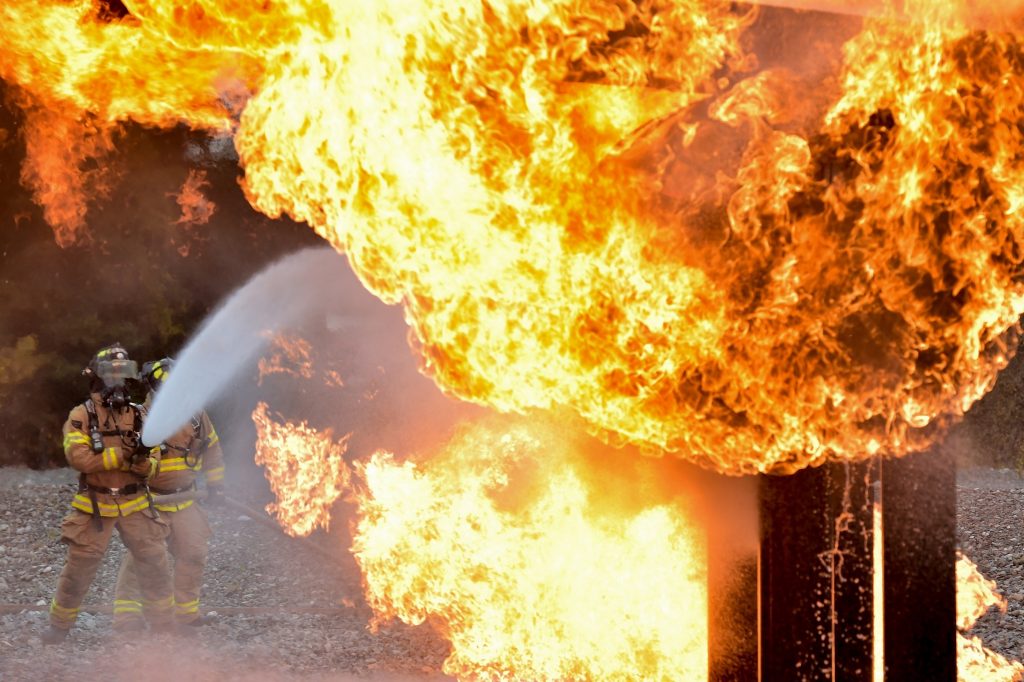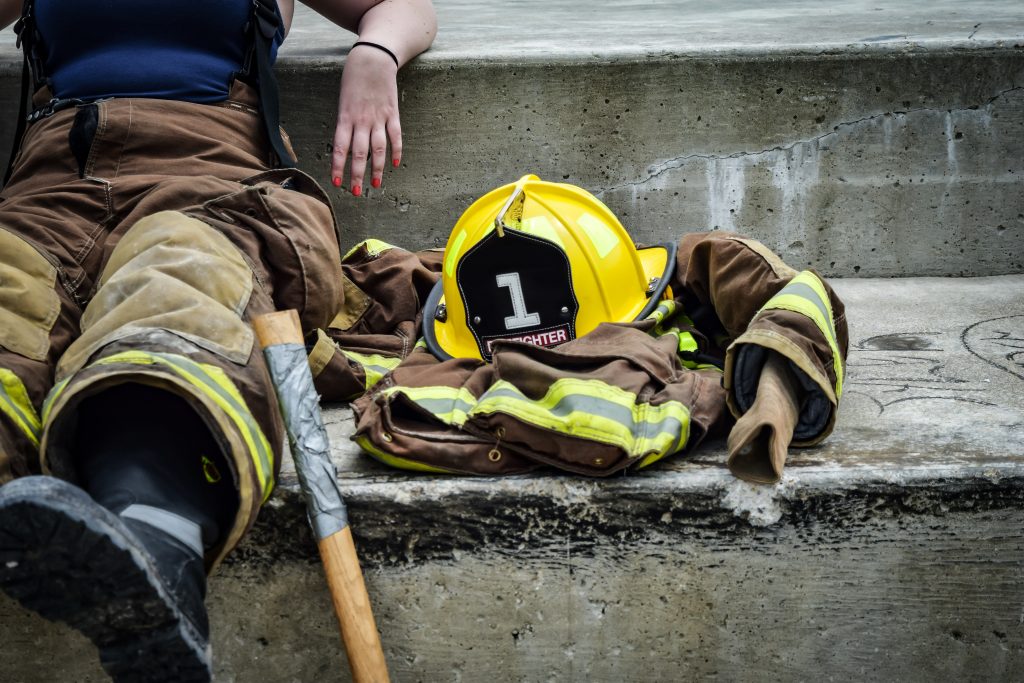The firefighter’s job requires physical fitness and quick decision-making together with many other skills.
Firefighters face dangerous situations regularly.
Read on to get more information about the job of a firefighter, tasks, skills, qualifications, opportunities in the field, and more.
Article Table of Contents
What Does a Firefighter Do
The title “firefighter” doesn’t fully describe the entire scope of work.
Firefighters deal with a lot more tasks including first aid service.
When not dealing with the emergencies, firefighters advise the public on safety measures and fire prevention.
Firefighters need to be physically fit and able to react to stressful situations quickly.

Responsibilities
- Extinguish fire using extinguishers, water hoses and pumps, and foams.
- Rescue victims from burning buildings or those affected by storms or other disasters.
- Administer first aid to injured or ill people, or assist emergency management technicians.
- Contain flammable and other dangerous materials and keep the public away from them.
- Investigate what caused fires.
- Make reports on incidents.
- Educate the public on safety measures and fire prevention.
- Continuously train on physical fitness and incident response.
- Oversee evacuations of dangerous areas with active fires, including forest fires areas.
Prevention and extinguishing fires are just a small part of the firefighter’s job.
Two in three emergency calls to fire departments relate to medical emergencies.
Other situations can involve rescuing people trapped in the buildings damaged by storms, or victims struggling in floods, lakes, or rivers.
Essential Skills
Communication:
Firefighters communicate with other firefighters or emergency responders reporting the conditions to them.
Communication skills also imply listening to dispatches or instructing other responders or the public.
With accurate reports, investigators such as law enforcement and insurance companies can make the right decisions about criminal actions or fraudulent insurance claims.
Decision-making:
In times of emergency, firefighters must make decisions quickly.
They have to work under a lot of pressure and danger.
With courage and command skills, firefighters can act promptly to save lives.
Physical fitness:
There are requirements set by the fire departments on how physically fit firefighters should be to lift, carry, run, climb, so they can rescue victims.
Firefighters need good stamina to be able to endure several hours at the accident sites.
Often, these situations can take place under harsh weather conditions, or even in the forest fires.
How to Become a Firefighter
It is essential to have acquired certification and training in firefighting, first aid techniques, and rescue operations to become a firefighter.
Before one can be employed full-time, they need to undergo on-the-job training as well as a probationary work period.
During this time, firefighters demonstrate their knowledge, physical skills, and quick reaction to save lives.
Training and Qualifications
The minimal educational requirement for firefighters is a high school diploma.
About three in ten firefighters have a post-secondary education.
31% of firefighters attended college but didn’t earn a degree.
Firefighters receive most of their training in the departments where they will work.
This training includes rescue and firefighting techniques, fire and other safety codes, and first aid and emergency medical procedures.
Future firefighters are taught how to operate fire trucks, “jaws of life”, fire extinguishers, axes, ladders, and chainsaws.
Programs conducted out of the fire departments and state fire agencies include preparing for disasters, arson investigation, management and responding to spills of hazardous materials, public safety.
Firefighters must have an emergency management technician (EMT) certification.
For this, they need to take post-secondary courses in trauma care and airway management.
Some departments require their firefighters to be EMT-Paramedic.
To acquire both certifications, you need to take the coursework and training and pass a national written and practice exam.
Experience
Typically, firefighters gain experience at training and a probationary period after their time in the academy.
This period can vary from department to department.
Volunteer work at a fire department or volunteer rescue squad also counts as experience.
Volunteer departments usually operate in rural residents where the government or municipal fire department does not operate.
In 2013, about seven in ten fire departments were filled by volunteers.
Working Hours
The work of a firefighter is full-time with varying shifts.
The shifts can be 24 hours at a time, based on the employer.
Those who work a 24-hour shift usually get two or three days off after.
Other departments set the shifts of 10 hours on duty, with the next 14 hours off.
Firefighters in municipal departments usually report to their fire stations for their shifts and are available for emergency calls.
At the station, firefighters can eat and sleep when they aren’t responding to emergency calls.
Their hours can be prolonged in times of emergency incidents or mass fires.
No matter whether firefighters are at home or station, they should be on-call and available for fires, vehicle wrecks, or other emergencies.
Therefore, firefighters can work at night, on weekends, or on holidays.
Job Outlook
According to the US Bureau of Labor Statistics, the employment rate for firefighters should increase by 5% until 2024.
This means that 17,400 more job openings will appear in the field.
In 2014, there were 344,700 firefighters employed in the US.
91% of firefighters were employed by the local governments.
The rest of the openings were filled by state and federal agencies.
The number of available positions will depend on the turnover between those retiring and those seeking a career.
The profession of a firefighter is quite competitive.
Openings sometimes can be quite limited, but the educational requirements are low at the same time.
In general, it’s enough to have a high school diploma and training in basic EMT to earn the certification.
Firefighters can be promoted to engineers, captains, lieutenants, battalion chiefs, and assistant chiefs.
With experience and years in the field, firefighters can become chiefs or fire investigators, or fire marshals.
In some departments, a bachelor’s degree in fire science or similar disciplines may be required for those who seek positions higher than battalion chief.
Conclusion
Firefighters serve as prevention educators and rescue personnel.
With frequently happening emergencies, they should be ready to work irregular hours and be on-call for long times.
The firefighter’s job requires stamina, concentration, and strength, as the weather conditions can be harsh sometimes.
With good performance and experience, firefighters can reach supervisory and senior positions, such as department chief of battalion chief.
